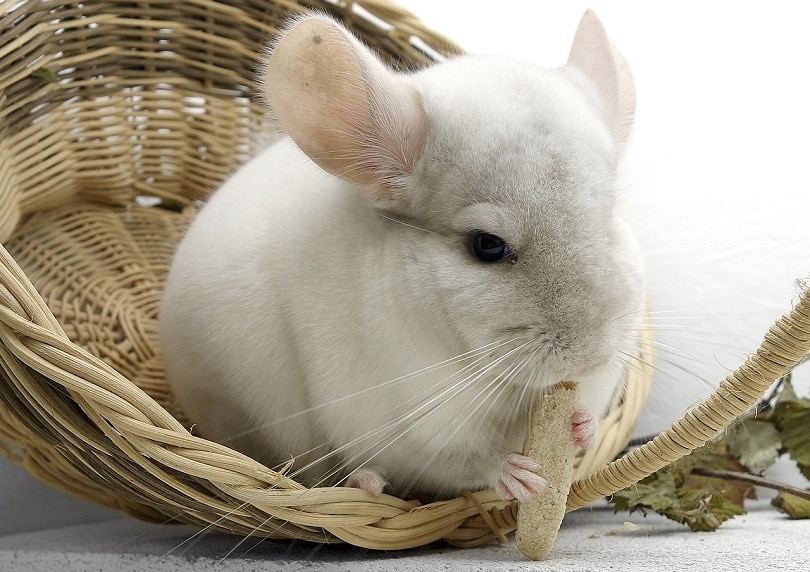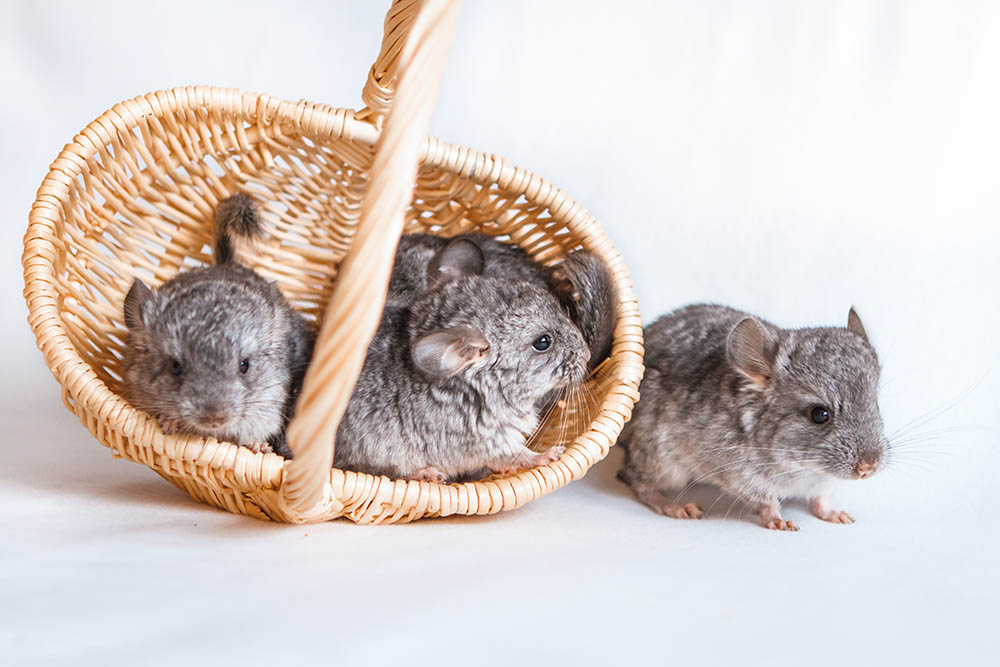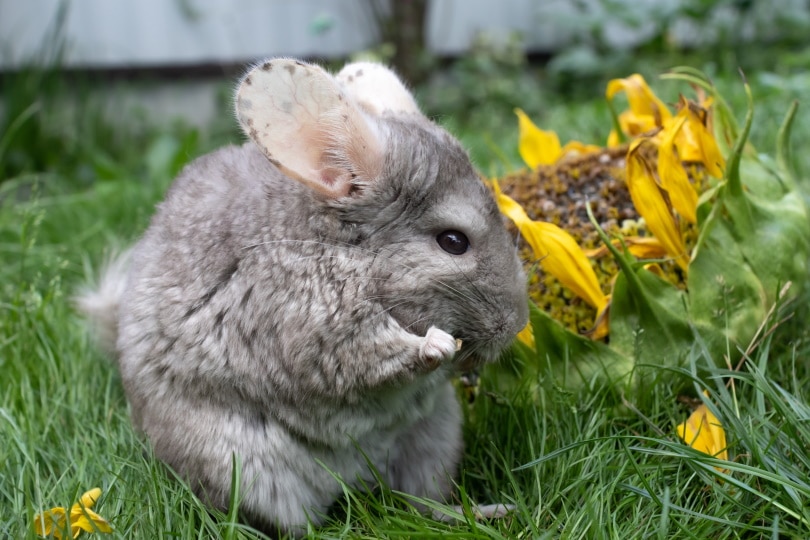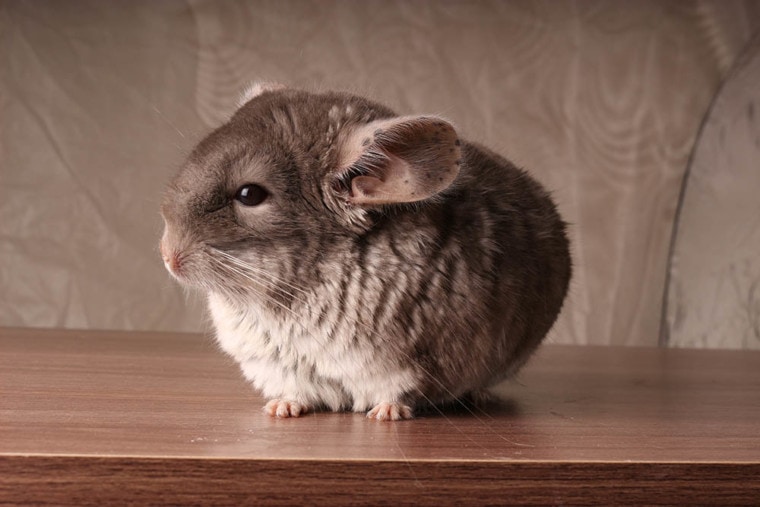
Chinchillas are a type of rodent native to the Andes Mountains in South America. They’re a little larger than the ground squirrel and, like most animals, they have the ability to jump. One of the first questions many potential owners have about these pets is how high they can jump. The short answer is about 6 feet (1.8 meters), but quite a few factors come into play when determining the actual height.
Keep reading while we look at these other factors as well as some other interesting facts about the chinchilla to help you be better informed.
How Do Chinchillas Jump So High?
Chinchillas have a bone structure in their back legs that’s similar to most mammals; however, they have unique adaptations, likely a result of the environment where they originally evolved in. It isn’t possible to compare their hindleg anatomy to other rodents, as they have unique features that other rodents don’t possess. Nonetheless, they share several similarities with mole-rats in this regard.
Chinchillas jump much in the same way as other rodents and animals do. Their powerful hind leg muscles offer them the initial thrust for their jump. Their tail, foot pads, and conformation allows them the ability to easily jump great distances. In addition, they’re able to run at impressive speeds of 15 mph (24 km/h).
The jury is still out on if sex plays a role on how high a chinchilla can jump. Though males generally have longer bones than females do, these bones would also be heavier, making a jump more taxing for them. However, if their muscles are strong enough, they would hypothetically manage a higher jump than females would. However, the difference between the bone sizes in chinchillas is considered non-significant1.
Chinchillas that are injured, overweight, juveniles, seniors, or suffering from other mobility issues will not be able to jump as high as a healthy adult in a normal weight range.
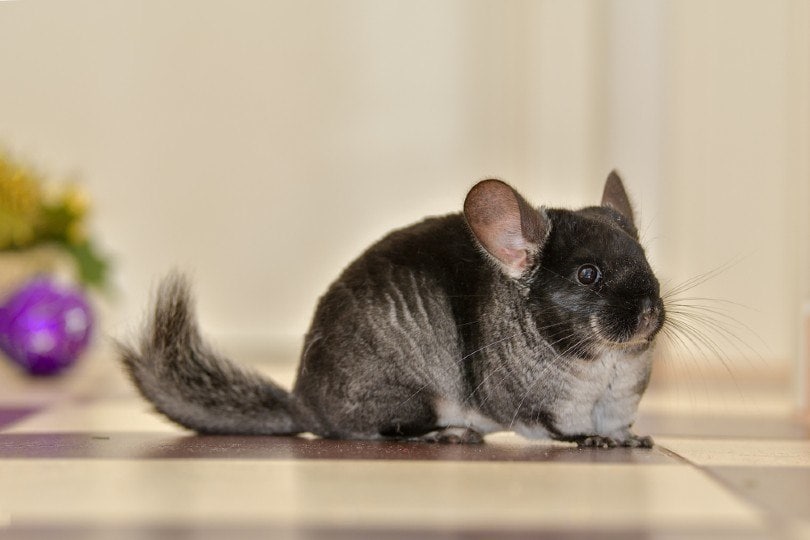
Why Do Chinchillas Jump So High?

Can a Chinchilla Get Hurt Jumping?
Unfortunately, chinchillas can and do get hurt occasionally from jumping. They’re very good at judging how far they can jump, and although rare, sometimes accidents happen. Their feet could get stuck or the landing might not be sturdy. Your pet does not have to jump high to get injured, and injuries include broken toes, broken ribs, damaged organs, and even concussions.
The best way to prevent these incidents is to ensure that your chinchilla is in an environment that’s appropriate for them. Appropriately spaced cage bars, jumping surfaces with adequate grip, and no loose perches or jumping spots will greatly reduce the incidences of injury. In addition, it’s a good idea to have a carpeted floor to cushion any unfortunate falls if your chinchilla is playing outside their enclosure. Within their enclosure, thick substrate will help mitigate injury in the unfortunate event of a fall.
If your pet seems to be less active after a jump and you think they might be injured, we highly recommend taking them to the vet to have them looked over. The vet can help put your mind at ease, and if there is a problem, they should be able to put you on the right track to fixing it.
Summary
Chinchillas can jump about 6 feet (1.8 meters) in height, which is pretty amazing for these small animals. The jumping helps them escape predators and traverse the steep rocky terrain of the Andes Mountains. As a pet, your chinchilla will likely use their jumping to express normal behavior. Though there is a chance of injury, the risk is small, so you needn’t be overly concerned. The best way to keep your pet safe is to ensure their play areas are chinchilla-proofed. If injury does occur though, you should have your chinchilla looked over by your veterinarian.
Featured Image Credit: Natalis.ph, Shutterstock


